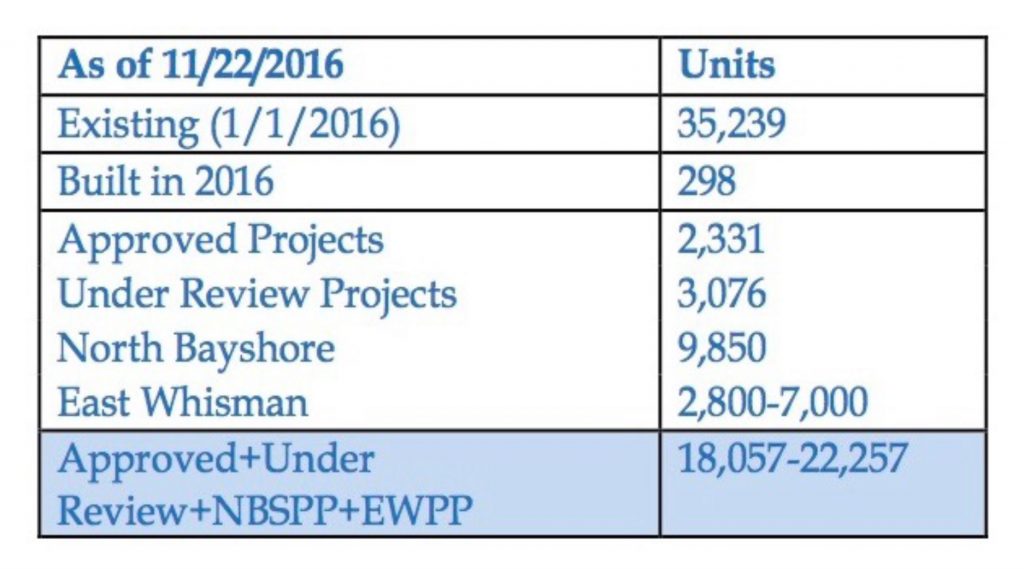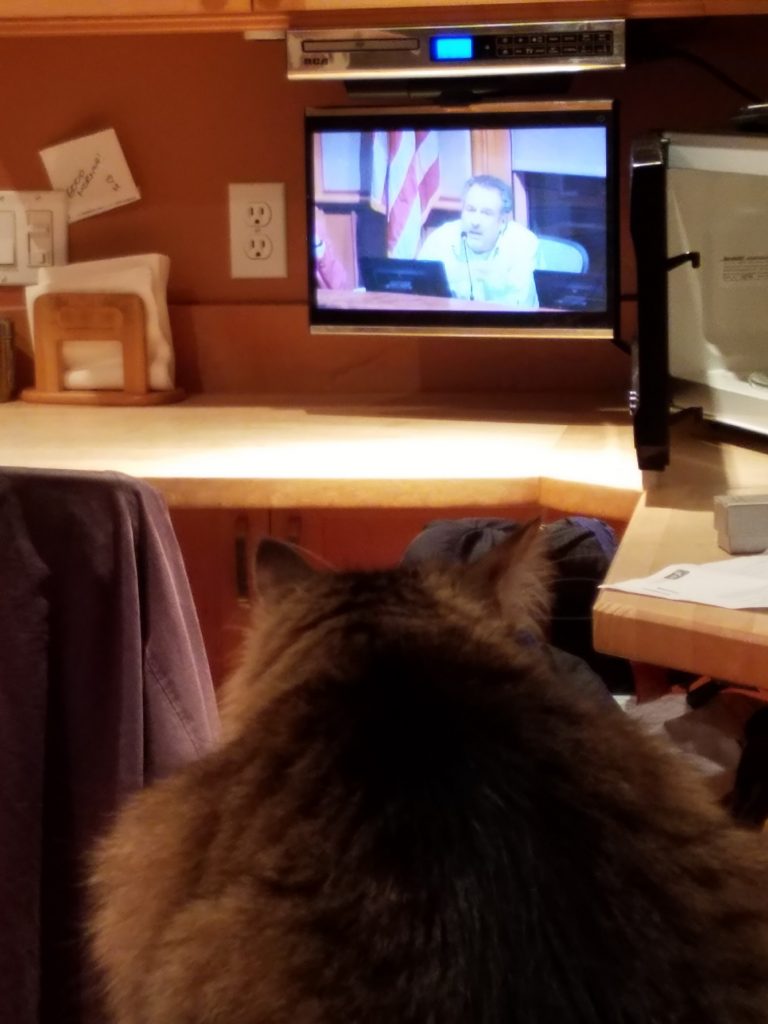December 28, 2016
2016 was a very busy year for me as a member of the Mountain View City Council. We not only had extra Council sessions, but I attended regional meetings on transit, housing, water, and aircraft overflights. Mountain View is a busy city, with 71 projects listed in our Planning Division update.
I also dipped my toe (OK, maybe my knee) into partisan politics, attending the Democratic National Convention as a Bernie Sanders delegate. Now I’ve joined a slate of grass roots activists seeking to become delegates to the California Democratic Convention. The local Caucus is January 7, 2017, but I’ll address that soon in a separate message. After the devastating November 8 national election, I wrote a column for the Mountain View Voice urging people to confront the Trumpublican agenda. See http://mv-voice.com/print/story/2016/11/18/guest- opinionwe-must-confront-trumps-agenda-onsustainability-and-human-rights-issues.
Housing
Silicon Valley’s housing crisis is now national news, and I am proud that Mountain View is taking leadership in addressing it. In December, city staff provided us with a status report, Remember, there is no guarantee that all units under consideration will be built, and that it will take many years to implement the North Bayshore and East Whisman Precise Plans. Still, our plans stand as a model for neighboring job-rich cities.

Once Mountain View sent out signals welcoming new housing construction, the private sector responded. In addition to the above projects, most of which moved forward through our normal planning process, we received proposals for 16 “Gatekeeper” projects in December. (When the Council awards Gatekeeper authorization for a property, that means that city staff is authorized to work with property owners and developers in advance of official approval.) Thirteen of them included housing.
In addition to approving and envisioning a series of affordable housing projects for families, seniors, veterans, and others, we are establishing goals for greater percentages of affordable units in new developments. It’s my hope that we can find ways to provide more housing for middle-income people, including entry-level ownership opportunities.
Our focus seems to be moving from simply adding large quantities of housing to creating or enhancing walkable, livable neighborhoods, providing room for retail, services, and schools. We are looking for ways to incorporate public transit and bicycle infrastructure, while reducing parking requirements, to minimize the impact of new development on traffic. Of course, locating new housing near employment centers and mass transit is the best way to hold the line on traffic.
After reviewing two major housing proposals that would displace hundreds of current tenants, I’m hoping we’ve begun to question the destruction of “naturally affordable” housing. Even where our Tenant Relocation Assistance Ordinance is inadequate to help residents who are being displaced, we’re usually able to win additional promises of assistance, but the proposed new apartments will be much more expensive than the units being torn down, and by state law they will be exempt from rent control.
Of course, rent control was the hottest housing issue this year. The Mountain View Tenants’ Coalition collected thousands of signatures to place Measure V on the ballot after the Council failed to adopt any enforceable legislation, including just cause eviction, to protect apartment renters against displacement. I was the only Council member to support Measure V.
Despite a “No” campaign that spent hundreds of thousands of dollars, Measure V passed with 53% of the vote. So now the landlord opponents have gone to court to overturn the voters’ will, making arguments that if successful would undermine longstanding rent control laws in about a dozen California cities, including Los Angeles, San Jose, San Francisco, and Oakland. It’s my hope that the City will join the initiative’s proponents in mounting a robust defense. Assuming the measure stands, the Council will soon be appointing a five-member rental housing committee charged with the difficult task of devising regulations and applying the measure fairly.
The hundreds of people living in parked vehicles along our streets are the most visible symbol of our housing crisis. It’s a problem for the vehicle dwellers who cannot otherwise afford to live in Mountain View, and it’s a problem for the residents who find the rows of RVs nearby a nuisance. Our survey showed that a majority of recreational vehicle dwellers in Mountain View have jobs. Many more have social security. We have not established a safe place for vehicle dwellers to park; we have not set up a waste disposal facility. We’re trying, but the results are disappointing.
Finally, we modified our Companion Unit ordinance to make it easier for homeowners to add “in-law units” on their property, in advance of state legislation enacted to do the same.
Traffic
Traffic is the flip side of the housing crisis. Our freeways and roads are clogged with commuters, many of whom drive long distances to get to work. While CalTrain is bursting at the seams, of the 18,209-plus people counted commuting in North Bayshore one morning this March, 171 rode transit, and of those only 7 of those rode VTA buses.
Mountain View is slowly making incremental improvements, such as the planned reversible bus lane on Shoreline Blvd., new bike lanes, and improved crosswalks. We’re making sure that new developments help provide alternatives to single-occupancy vehicles for employees and residents. We’re improving the free (Google-funded) MVGo shuttle. Looking ahead, we’ve hired a consultant to come up with options for an elevated, automated guideway connecting downtown with North Bayshore.
In preparation for Measure B, the county-wide transportation sales tax measure that passed easily in November, Mountain View led a coalition of North County and West Valley cities asking that revenues be used to expand transit designed to relieve commute traffic, and in particular to support CalTrain and transit along the Highway 85 Corridor. We struck a deal and supported Measure B. In November, Mountain View led the County in its percentage support for the successful measure.
I met regularly with officials from other cities along the CalTrain corridor as part of the Local Policy-Makers Group, overseeing the electrification of CalTrain and the completion of High Speed Rail up the Peninsula. We are developing a common approach to promote the elimination of the dozens of unsafe, traffic-slowing grade crossings between San Jose and San Francisco.
In Mountain View, we voted to re-route auto traffic at Castro Street and the railroad tracks, agreeing to create a tunnel under the tracks and Central Expressway for bicycles and pedestrians. We also began the environmental analysis of the planned Rengstorff underpass. We are developing plans for a multi-use Transit Center, to be better connected to downtown. Most downtown restaurant owners oppose the plan to block Castro at the tracks, but I’m hoping to convince them that converting the first three blocks of Castro into a pedestrian mall (with crosstreets) will make downtown Mountain View even more vibrant and successful.
I’ve always opposed the proposal for median bus-only lanes on El Camino Real, so as a member the multi-jurisdiction Bus Rapid Transit Policy Advisory Board I proposed High- Occupancy Vehicle right lanes for El Camino instead. That compromise alternative was greeted tepidly by our Council, and we are waiting to see what other cities say when they are briefed in 2017.
Other Issues
Sometimes I feel like a utility infielder, moving from issue to issue as needed. We are fortunate that our economy is strong, so we were able approve a responsible budget that carefully adds key new positions to the city staff while giving our employees well deserved raises. Our city-wide minimum wage rises to $13/hour on January 1, 2017 and $15/hour on January 1, 2018.
Garbage turned out to be one of the most controversial issues in town this year. Initially, city staff proposed that garbage pickup city-wide be reduced to every-other-week to encourage greater diversion of food scraps into yard-trimming toters for composting. As the only Council member taking part in the food scraps pilot, I supported diversion but opposed reduced garbage service. Fortunately, by the time the matter came back before the Council, hundreds of residents had made their objections clear. The Council voted in December to collect food scraps in composting toters city-wide, but garbage collection will remain unchanged. That is, both food scrap/yard waste and garbage pickup will be weekly.

The long-simmering debate over aircraft noise from flights approaching the San Francisco Airport reached Mountain View this fall when Palo Alto floated a trial balloon proposal to divert flights over Mountain View. This happened at a time when inclement weather was sending San Jose-bound flights over Mountain View at an altitude of 3,000 feet and below. Many Mountain View residents expressed concern, so the City wrote a letter, and I personally testified before the Select Committee developing regional recommendations. The Palo Alto proposal was not adopted, but I along with a group of Mountain View volunteers will continue to document the impact of San Jose-bound flights in the hope of reducing their disruptive impact. If you’re ever wondering where those noisy planes above are headed, you can identify and track them at https://www.flightradar24.com/37.58,-122.16/10.
I have long been concerned that the rapid redevelopment of the San Antonio area has been missing key elements: an elementary school and a park. The city of Mountain View has been willing to include both, but it never designated specific properties. Instead, it has been waiting for the Los Altos School District, which has several hundred students living in this part of Mountain View, to identify a school site, hopefully with an accompanying shared park. The school district has thus far been unable to negotiate to buy property there. In November, I appeared at a school board meeting, urging (speaking for myself alone) that the City and District partner to obtain a site. In December, my colleagues agreed, but they made it clear that the ball is in the District’s court. It’s my hope that in early 2017 that the Los Altos School Board will consider using eminent domain to acquire a school property, since property owners seem unwilling to sell. Then we can move ahead together.
A whole lot more occurred in 2016. We moved forward, with neighboring jurisdictions, to create Silicon Valley Clean Energy, which plans to deliver 100% carbon-free energy to our communities. We are working to restore fish passage in Stevens Creek. We opened Heritage Park with a restored Immigrant House and plans for a demonstration garden. We adopted a campaign donation disclosure ordinance. And we designed a Residential Permit Parking system, to be implemented by the block-by-block vote of participating residents.
Many of the residential and commercial developments approved by the Council during my term have been on property with underlying groundwater contamination. I have drawn on my experience, through my day job at the Center for Public Environmental Oversight (CPEO), to ensure that building occupants are to be protected from exposure to intruding toxic vapors. In fact, in December CPEO published my on-line report, “A Stakeholder’s Guide to New Construction at Vapor Intrusion Sites” (see http://www.cpeo.org/pubs/SGNC.pdf), putting forward Mountain View’s environmental review process—instituted before I joined the Council—as a national model.
I don’t expect that everyone reading this report will agree with everything I’ve done as a council member. Indeed, I welcome your suggestions and criticisms. And I appreciate the interest and effort of anyone who has made it to the bottom of such a long and busy report.